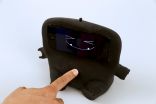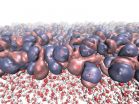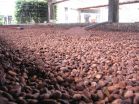(Press-News.org) When you take a medication for, say, high cholesterol, do you know that pill is really what the label says it is? Depending upon the type of medicine and where you live, the threat of falsified medications (also referred to as counterfeit, fraudulent, and substandard) can be quite real, yet the full scope and prevalence of the problem is poorly understood, say researchers at University of California, San Diego School of Medicine in a new report published April 20 in the American Journal of Tropical Medicine and Hygiene.
Counterfeit medicines have traditionally been defined as those for which the identity or source is mislabeled in a way that makes them appear to be a genuine product when they are not, though definitions of the problem itself are the subject of international debate.
The UC San Diego report is part of a special journal supplement featuring a variety of studies examining aspects of the "global pandemic of falsified medicines." Produced by diverse universities and institutions across the country and world, the supplement investigates the quality of vital, broadly sold drugs, such as anti-malarials and antibiotics; new tests and assays to detect counterfeit drugs; and proposed policy changes and laws to reduce the distribution and sale of falsified medications.
The UC San Diego study looked at the depth of counterfeit drug penetration in global legitimate medicine supply chains. "Our study was based on data from the Pharmaceutical Security Institute (PSI), a non-profit organization with members from the pharmaceutical security community," said lead author Tim K. Mackey, MAS, PhD, assistant professor of anesthesiology and global public health, director of the Global Health Policy Institute and associate director of the joint masters program in health policy and law. "PSI data is collected from its industry members, law enforcement, drug regulators, the pharmaceutical industry, and media reports, and confirmed by a team of multilingual investigators. It's the only study of its kind with global statistics on counterfeit medications. We limited the scope to legitimate supply chains, places where you expect to get legitimate medicines, such as hospitals and pharmacies."
The primary finding and "surprise," said Mackey, is how little is known about the precise scope of the problem and how few mechanisms exist to monitor it despite the availability of some data. During the period studied, 2009 through 2011, there were 1,510 total counterfeit incidence reports tabulated by the PSI. But "nobody has a good idea how big the problem really is," said Mackey. "There are guesses, but it's hard to get accurate statistics on a criminal activity of this magnitude."
The falsified drug problem is not new, just bigger than ever, say experts. It covers widely used drugs, notably anti-malarials, and more high-value, high-demand drugs, such as medications to treat HIV/AIDS, serious cardiovascular disease and cancer. According to a 2000 World Health Organization report, almost one-third of identified counterfeit drugs contained no active ingredient; and more than 20 percent either had incorrect quantities of active ingredients or contained the wrong ingredients. Other fraudulent practices included false packaging and high levels of impurities.
Each year, it's estimated between 100,000 and 1 million people die from using counterfeit drugs.
"The most important takeaway of our study is that we don't have the necessary data or surveillance to effectuate meaningful public health interventions or policy change," Mackey said. "As an example, more than half of our dataset was from four countries, not necessarily because these countries have the most counterfeits, but possibly because they are countries of transit or are the ones actively looking for them." The researchers also noted that scores of countries filed no counterfeit incidence reports during the study period.
"We hope this study will prompt key opinion leaders and policymakers to make necessary changes to surveillance, security and improvements to pharmaceutical governance of drug supply chains in order to prevent future falsified medicine incidents and protect patients worldwide," said Mackey.
INFORMATION:
Study co-authors include Bryan A. Liang, Global Health Policy Institute; Peter York, and Thomas Kubic, Pharmaceutical Security Institute.
This research was funded, in part, by the Partnership for Safe Medicines and the Pharmaceutical Security Institute.
DURHAM, N.C. -- While the female baboon's big red bottom may be an eyesore to some, it has an aphrodisiac effect on her mates. Biologists have long thought that baboon males prefer females with bigger backsides as the mark of a good mother, but new research suggests it isn't so simple.
A study of wild baboons in southern Kenya reveals that the size of a female's swollen rump doesn't matter as much as previously thought.
The study appears online in the journal Animal Behaviour.
Baboons breed throughout the year, and mating occurs during times when a female's behind ...
ALEXANDRIA, VA, APRIL 20, 2015 - Higher-than-expected rates of pediatric cancers have been identified in the Miami metro area and an area west of the Everglades in a series of five statistical analyses conducted for Science and Public Policy, an open-access, online public-policy journal published by the American Statistical Association (ASA).
In a review of the analyses for Science and Public Policy, Lance A. Waller, a biostatistics professor specializing in spatial epidemiology at Emory University in Atlanta, urges care in next steps, recommending that state and local ...
WASHINGTON, April 20, 2015 -- Wednesday, April 22 large-scale use of chemical weapons in warfare. Some of the best minds in chemistry at that time, including a Nobel Prize winner, used their knowledge of science to build humanity's new weapons of mass destruction. Reactions presents this sobering look at the chemistry behind the modern world's first chemical weapons. Check out the video here: http://youtu.be/e8W3dOURya0.
Check out all of C&EN's great coverage of the 100th anniversary of chemical weapons at http://chemicalweapons.cenmag.org.
INFORMATION:Subscribe to ...
PITTSBURGH--As people find ever more inventive uses for smartphones, touchscreens sometimes fall short as control surfaces. Researchers at Carnegie Mellon University and Disney Research have developed an inexpensive alternative - a toolbox of physical knobs, sliders and other mechanisms that can be readily added to any device.
The researchers drew inspiration from wind instruments in devising these mechanisms, which they call Acoustruments. The idea is to use pluggable plastic tubes and other structures to connect the smartphone's speaker with its microphone. The device ...
ATLANTA -April 20, 2015- Despite strong evidence and guidelines supporting its use, post-surgical radiation therapy for prostate cancer patients at risk of recurrence is declining in the United States. The study, published online in the journal European Urology, finds fewer than 10 percent of patients at risk of recurrence received postoperative radiotherapy within six months of surgery in the U.S.
Although radical prostatectomy (RP) is a common curative treatment for localized prostate cancer, about 30% of patients will develop biochemical recurrence after surgery, ...
The National Physical Laboratory (NPL), the UK's National Measurement Institute in collaboration with IBM and the University of Edinburgh, has used a new quantum model to reveal the molecular structure of water's liquid surface.
The liquid-vapour interface of water is one of the most common of all heterogeneous (or non-uniform) environments. Understanding its molecular structure will provide insight into complex biochemical interactions underpinning many biological processes. But experimental measurements of the molecular structure of water's surface are challenging, ...
The discovery of a gene involved in determining the melting point of cocoa butter -- a critical attribute of the substance widely used in foods and pharmaceuticals -- will likely lead to new and improved products, according to researchers in Penn State's College of Agricultural Sciences.
The finding by plant geneticists also should lead to new varieties of the cocoa plant that could extend the climate and soil-nutrient range for growing the crop and increase the value of its yield, they said, providing a boost to farmers' incomes in the cocoa-growing regions of the world.
Cacao, ...
Singapore, 20 April 2015 - Since the discovery of graphene about a decade ago, scientists have been studying ways to engineer electronic band gaps in the material to produce semiconductors which can create new electronic devices. A team of researchers from Yale-NUS College, the Center for Advanced 2D Materials and Department of Physics at the National University of Singapore (NUS) and the University of Texas at Austin, USA (UT Austin) have established a theoretical framework to understand the elastic and electronic properties of graphene. The findings were published in ...
As two galaxies enter the final stages of merging, scientists have theorized that the galaxies' supermassive black holes will form a "binary," or two black holes in such close orbit they are gravitationally bound to one another. In a new study, astronomers at the University of Maryland present direct evidence of a pulsing quasar, which may substantiate the existence of black hole binaries.
"We believe we have observed two supermassive black holes in closer proximity than ever before," said Suvi Gezari, assistant professor of astronomy at the University of Maryland and ...
Research by scientists at The University of Manchester has revealed that the colour of light has a major impact on how our body clock measures the time of day.
It's the first time the impact of colour has been tested and demonstrates that colour provides a more reliable way of telling the time than measuring brightness.
In research being published on April 17th in the Open Access journal PLOS Biology, the researchers looked at the change in light around dawn and dusk to analyse whether colour could be used to determine time of day. Besides the well-known changes in ...





